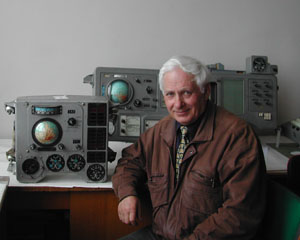The First Generation
|
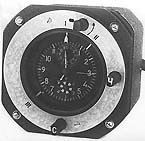
Chronometer on Vostok |
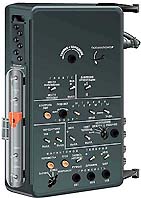
Control panel on Vostok |
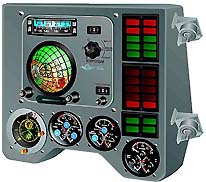
Instrument board on Vostok |
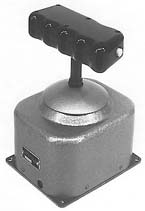
Hand controller on Vostok |
|
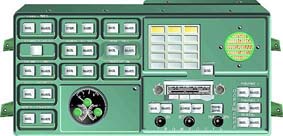
|
|
Crew compartment control panel on Soyuz-7K |
The first generation of IDS included
systems installed on the Vostok and Voskhod spacecraft, and also
individual control panels and instrument boards installed on other
space ships and stations. The first generation of IDS used a number of
methods and techniques of information display borrowed from aviation.
At the same time, completely new designs were also developed: a
compact handle for spacecraft guidance, a combined display of the
current location and the landing location; a combined display of temporal parameters.
In the latter, a new program-temporal method was implemented for
controlling signal parameters and for issuing control instructions.
The design principles of the first generation of IDS were later used
in the design of EVA control panels, lock-chamber control panels, and
panels for other functions.
The Second Generation
|
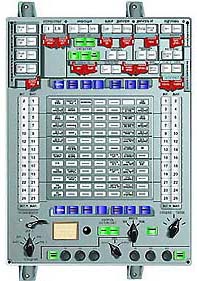
Control panel on the spacecraft 3KV no. 5
with artificial gravity |

Fueling control panel on space station Mir |
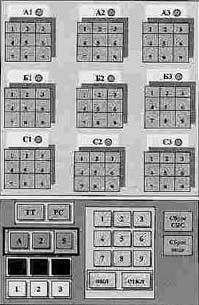
The structure of IDS Pluton on space station
Mir |
|

|
|
Control panel on the central
station of the Almaz complex |
The second generation of IDS implemented compression of the
"command-information field" with the matrix method of control object selection
and the multi-channel method of displaying information about the
parameters of controlled devices. Russian piloted spacecraft are
distinguished by the high degree of automation of control. Such systems
typically operate with binary signal information and discrete control of
onboard systems and flight regimes. For this reason, the development of
IDS for Russian spacecraft has been closely connected with a search for
methods and means for displaying large amounts of information and
issuing a large number of commands. As a result, there appeared manual
control devices with the matrix method of control object selection and
with signal information representation in both the compressed and the
decompressed forms. For example, the control panel of the
3KV no. 5 spacecraft implemented an original design for a double channel
of manual control. Push-button
controls are located around the perimeter of the command-signal field.
Either one of the cosmonauts (sitting on the right or on the left) or
both can work with this panel. This design uses minimal hardware
redundancy, while substantially increasing the reliability of the manual
control loop.
|
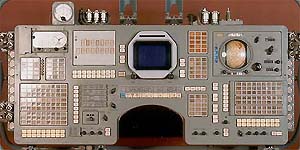
|
|
Control panel on Soyuz-T |
|

|
|
Control panel on the transport
ship of the Almaz complex |
The matrix method of control object selection
is used in the onboard control complexes of such spacecraft as Zond (IDS
Saturn), N1-L3 (IDS Uran, Orion, and Luch), Soyuz-T and Soyuz-TM (IDS
Neptun), and the space stations Salyut, Almaz, and Mir. The matrix method
is a particular example of a more general hierarchical method of control object selection.
One significant achievement at this stage was the spatial separation of
the command field and the information field. This principle was
implemented in IDS Mirzam-17K of the station Salyut, and in IDS
Mirzam-1A, Pluton, and Merkurii of the station Mir.
Information fields in
IDS Mirzam are represented as mnemonic schemes. A mnemonic scheme
illustrates the structure of the fueling system of the unified propulsion
system. Commands are entered via a
keyboard according to the matrix selection scheme. The mnemonic scheme
shows the locations of pressure gauges in fuel lines and fuel tanks of the
unified propulsion system. Information fields in IDS Pluton and Merkurii
are represented as a set of 3X3 signal panels.
|
